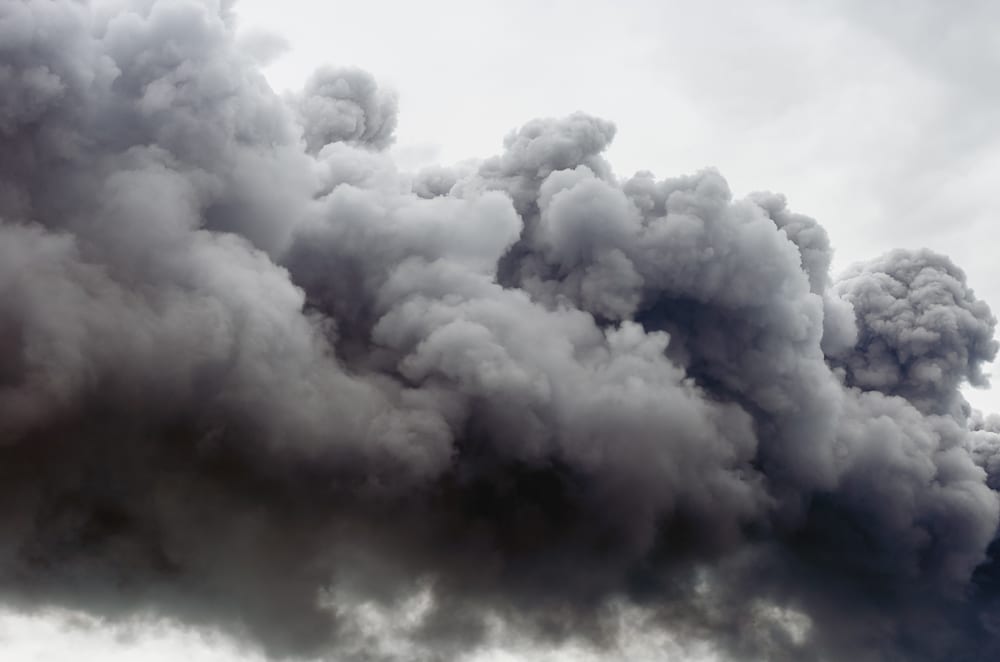Depending on the extent of a fire, smoke damage and soot stains are often the biggest concern. While you should clean up smoke and soot stains, there is another risk to consider. During smoke cleanup, Few people think to question “are smoke and soot dangerous?” However, inhaling soot and smoke can cause a number of health risks, leading to cancer or even causing suffocation and death. We look at the health risks of smoke and soot exposure, outline common symptoms, and review some of the most dangerous toxins released during a fire.
Common Toxins Found in Smoke and Soot
Depending on the type of materials involved in the fire, smoke and soot may carry hundreds or even thousands of carcinogens that can cause temporary or even permanent health issues. Some of the most toxin compounds released during fires are listed below. The greatest chances for exposure are when the fire is burning, then while cleaning smoke stains.
- Asbestos fibers – Asbestos is common in homes built between the early-1950s and the mid-1980s. The asbestos fibers in smoke and soot can cause mesothelioma, a type of cancer, that develops in the lungs, abdomen, and heart.
- Carbon monoxide – Carbon is one of the most common materials, appearing in nearly everything in your home. When burned, they can release carbon monoxide which can lead to suffocation. Exposure can cause heart disease, memory loss, and other chronic health issues.
- Formaldehyde – Common in many building materials and pressed-wood or particleboard furniture, formaldehyde can cause burning in mucous membranes of the nose, mouth, eyes, and lungs. Leukemia and brain cancer are possible in those with long-term exposure.
- Hydrogen chloride – PVC materials can release hydrogen chloride among other chemicals. The gaseous state of hydrochloric acid, hydrogen chloride can cause irritation or even burn mucous membranes of your nose and lungs. In the liquid state, it can burn your skin or eyes and even cause permanent blindness.
- Hydrogen sulfide – Oil, coal, and some types of building materials may release hydrogen sulfide gas, which smells like rotten eggs in low concentrations. It can irritate mucous membranes and the respiratory tract, as well as lead to pulmonary edema.
Are Smoke and Soot Dangerous
Unfortunately, yes, the smoke and soot produced by fires are dangerous. Trouble breathing and watery eyes are extremely common after inhaling smoke and soot. At a high enough concentration, any of the chemical compounds produced by fires can cause suffocation and death. Among the biggest concern for suffocation are carbon monoxide, hydrogen chloride, and hydrogen sulfide.
What Makes Soot and Smoke Dangerous
Homes and buildings are built using a huge array of materials. While most are safe under normal conditions, fires can release a countless number of chemical compounds into the air. Traveling in smoke and soot on air current created by the flames, they can spread throughout your property quickly. As a result, you can breathe them in during the fire or even days or weeks afterward.
Symptoms of Exposure to Smoke and Soot
The most common symptoms of exposure to smoke and soot are the irritation of the mucous membranes of the nose, eyes, and lungs. This can cause burning or watering eyes, runny nose, congestion, shortness of breath, and other breathing problems.
Other symptoms include nausea, headaches, confusion or disorientation, and trouble with your balance. In some rare cases, you may experience rashes or burns on your skin. Depending on the types of materials involved in the fire, you are also at a higher risk for cancer, heart disease, and chronic respiratory issues.
How to Prevent the Health Risks of Smoke and Soot Exposure
The most effective way to limit health risks from soot and smoke is will proper smoke and soot cleanup after a fire. Although ventilating the area will help reduce the intensity of those chemicals, it will not completely remove them.
This does limit the chances of suffocation, but you still run the risk of long term exposure unless you completely clean them. Proper cleaning to limit the dangers of smoke and soot involves purifying the area, cleaning surfaces, and cleaning the ductwork for heating and cooling systems.
Smoke and Soot Removal After a Fire
Protect your family and reduce the dangers of smoke and soot exposure with professional smoke damage cleanup after a fire. Call 1-888-443-3110 to speak with our fire damage cleanup specialist in your area. We always provide 24-hour emergency service and a free estimate.





